Exploring Irish Immigration: From Famine to Five Points Slum Life
VerifiedAdded on 2023/06/15
|5
|584
|220
Essay
AI Summary
This essay examines the migration of Irish immigrants from famine-stricken Ireland to the Five Points neighborhood of Lower Manhattan in the 19th century. The Five Points was notorious for poverty, crime, and exploitation, exacerbated by poor living conditions and disease outbreaks linked to contaminated water and infertile land. Landowner Lord Lansdowne encouraged Irish tenants to emigrate to North America. The influx of malnourished Irish immigrants led to social and economic tensions in America, sparking nativist opposition and anti-immigrant violence. Political parties and native-born Americans feared the growing influence of immigrants, leading to riots and the burning of Catholic churches and schools. The essay highlights how these events shaped American attitudes toward immigration and the separation of church and state.
1 out of 5
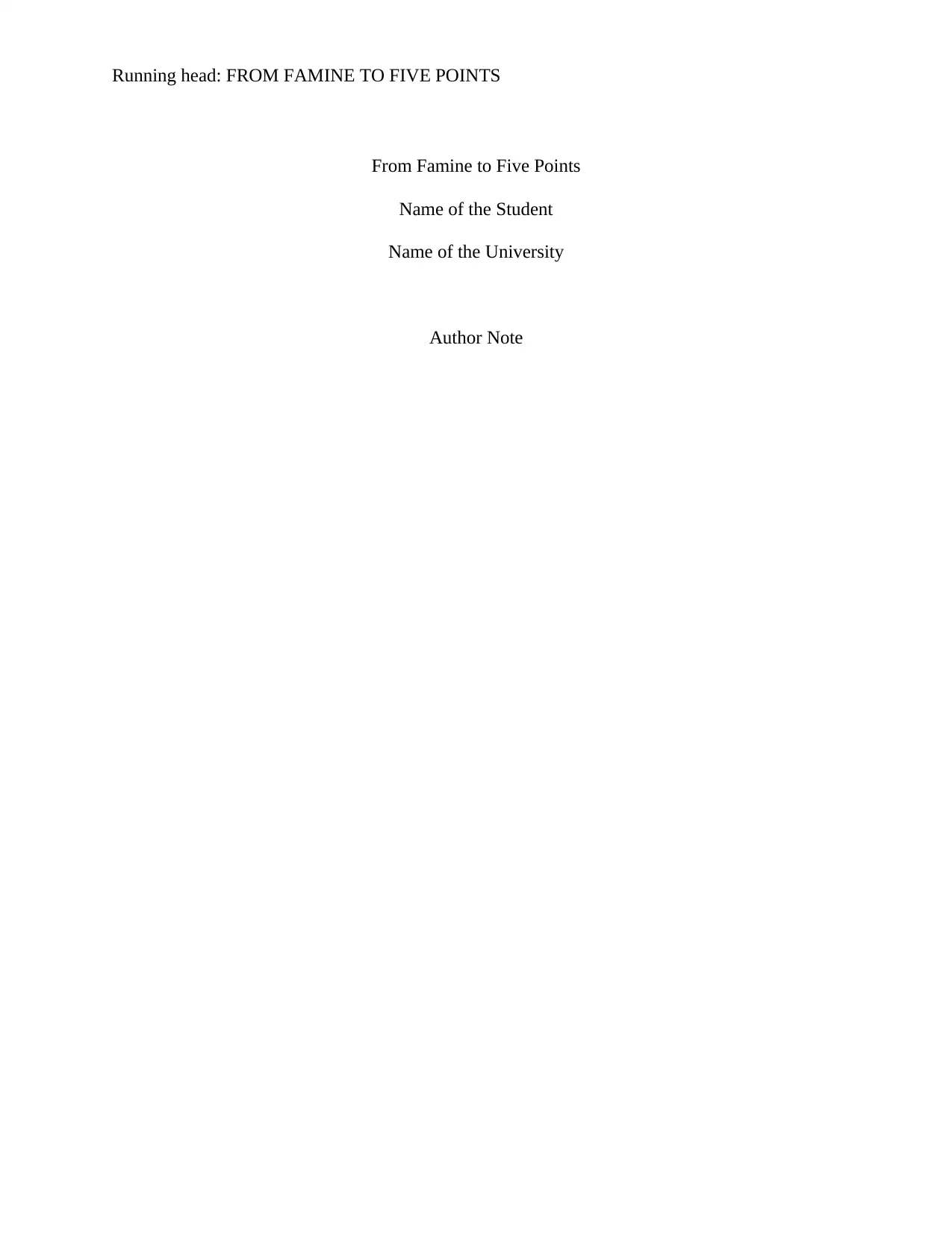
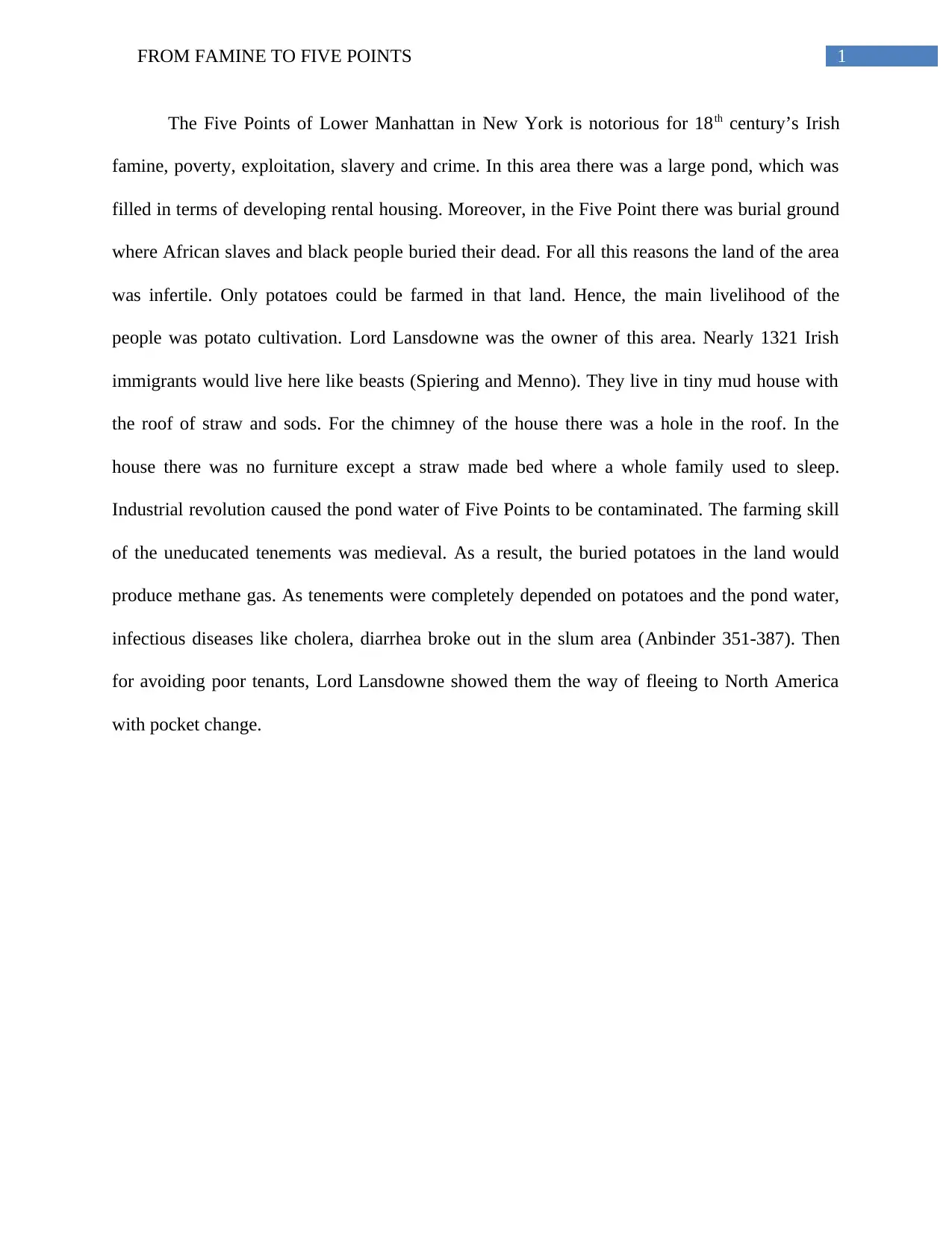
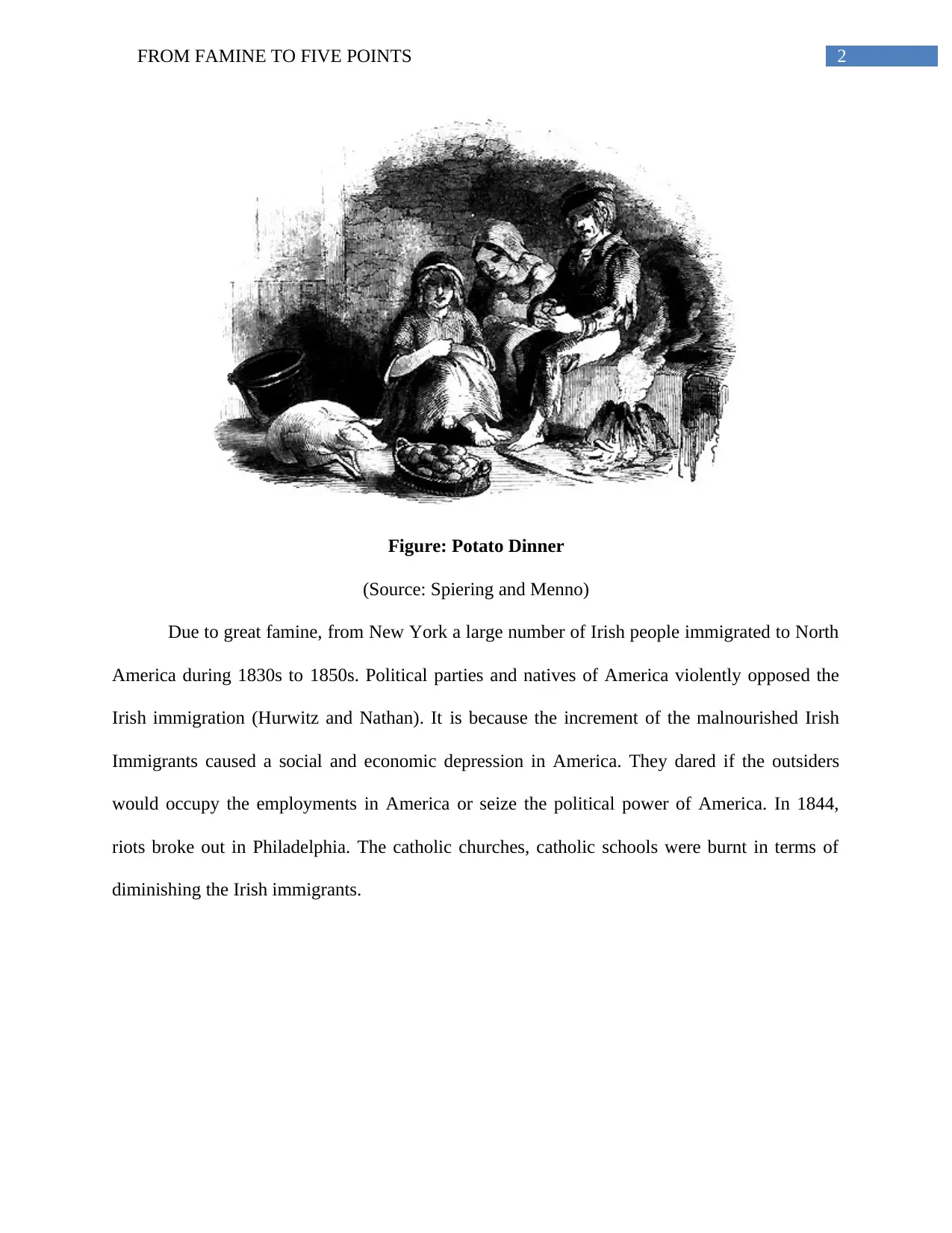

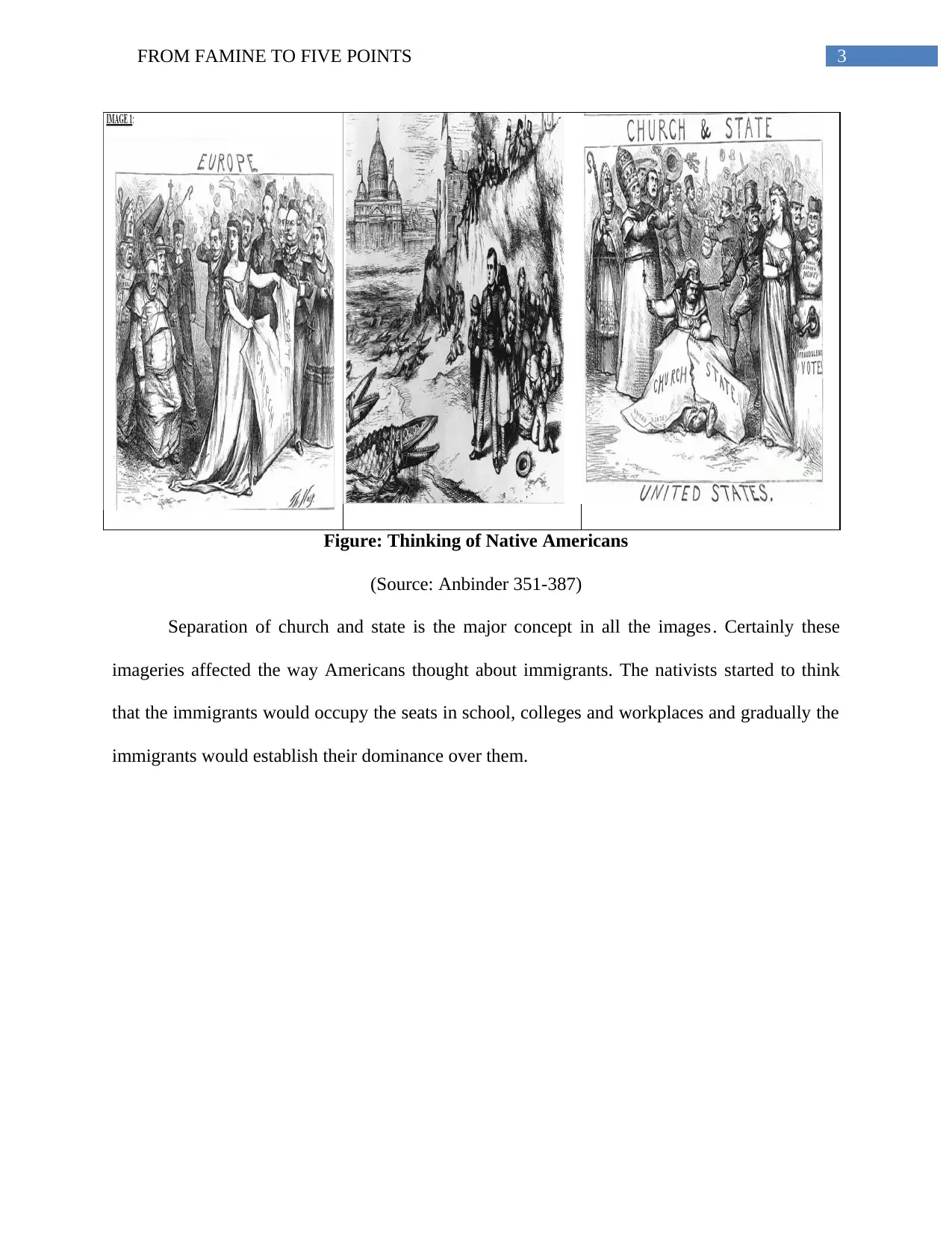
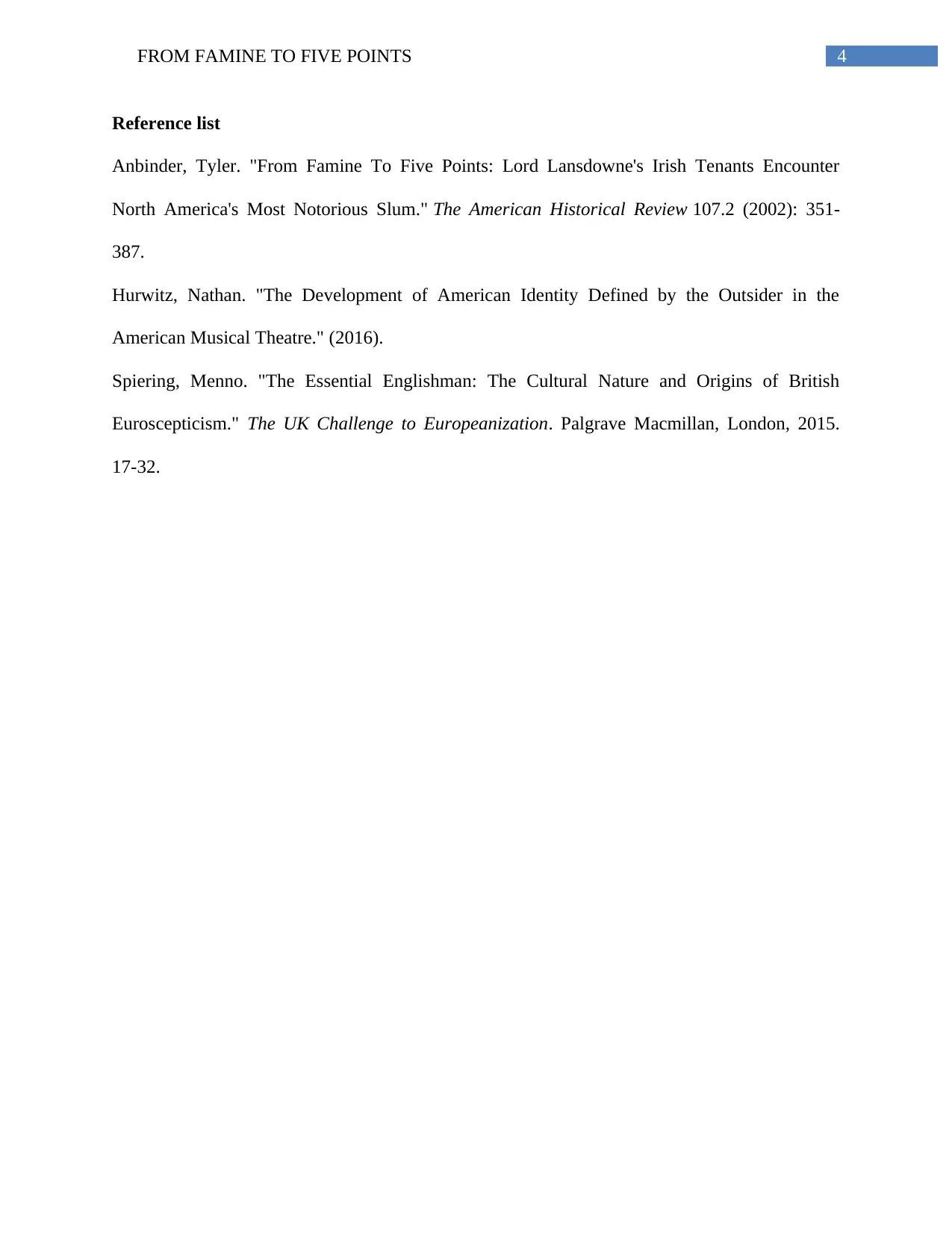
![[object Object]](/_next/static/media/star-bottom.7253800d.svg)